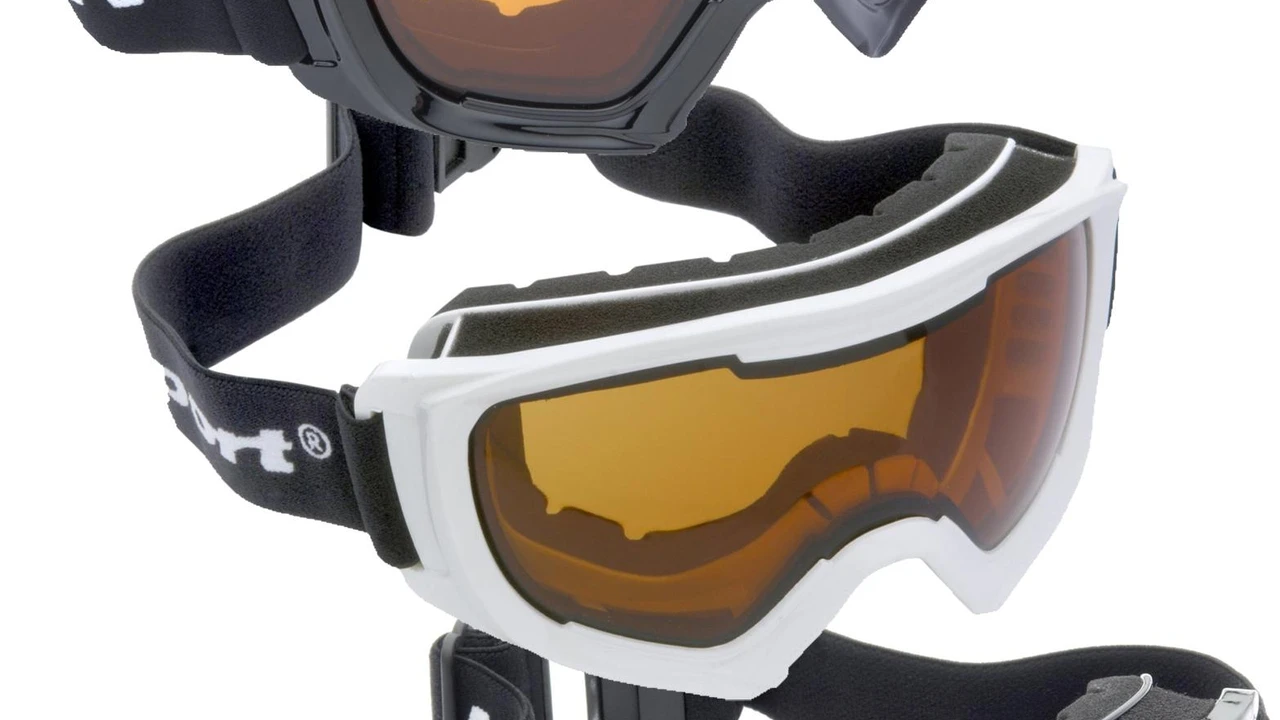
Goggles for Skiing and Snowboarding Your Ultimate Vision Guide
Alright, let's talk about ski and snowboard goggles. These aren't just a fashion statement on the slopes; they're absolutely crucial for your vision, safety, and overall enjoyment. Imagine trying to navigate a mogul field or a tree run with blurry vision, or worse, getting snow blindness from intense glare. Not fun, right? Good goggles protect your eyes from UV rays, wind, snow, and even impacts. They also help you see the terrain better, which is super important for spotting bumps, ice patches, and other obstacles.
Choosing the right pair can feel a bit overwhelming with all the options out there. You've got different lens colors, shapes, technologies, and price points. But don't sweat it! We're going to break down everything you need to know to pick the perfect goggles for your shredding style and the conditions you typically ride in. We'll cover lens types, frame designs, fit, and even throw in some top product recommendations to get you started.
Understanding Goggle Lens Types and VLT
The lens is arguably the most important part of your goggle. It's what you're looking through, after all! Lenses come in a huge variety of tints and technologies, each designed for specific light conditions. The key term you'll hear a lot is VLT, which stands for Visible Light Transmission. This is a percentage that tells you how much light the lens lets through. A higher VLT means more light gets through, making it better for low-light conditions. A lower VLT means less light gets through, ideal for bright, sunny days.
Low Light Lenses Foggy Snowy Conditions
For those overcast, snowy, or foggy days, you want a high VLT lens. These lenses typically have VLTs ranging from 40% to 80% or even higher. They're often yellow, rose, clear, or light blue in color. Their main job is to enhance contrast, helping you see bumps and contours in flat light conditions where everything looks white. Without these, it's like riding in a whiteout – super disorienting and dangerous.
- Yellow/Rose Lenses: Excellent for increasing contrast in low light. They make shadows pop and help define the terrain.
- Clear Lenses: Best for night skiing or extremely dark, stormy conditions where you need maximum light transmission (VLT 80%+).
- Light Blue/Green Lenses: Can also work well in low light, offering good contrast and a slightly different color perception.
Bright Light Lenses Sunny Glare Protection
When the sun is blazing and the snow is reflecting light everywhere, you need a low VLT lens to protect your eyes from glare and harmful UV rays. These lenses typically have VLTs from 5% to 20%. They're often dark gray, black, or mirrored. Mirrored coatings further reduce glare and add a cool aesthetic.
- Dark Gray/Black Lenses: Provide true color perception and excellent glare reduction.
- Mirrored Lenses: Offer maximum glare protection and a stylish look. The mirror coating reflects more light away from your eyes.
- Polarized Lenses: While not as common in ski goggles as in sunglasses, some high-end models offer polarization to cut horizontal glare, which can be very effective on bright, reflective snow.
All Condition Lenses Versatile Performance
If you're not keen on swapping lenses all the time, or if you experience a mix of conditions throughout the day, an all-condition lens is a great compromise. These usually have a VLT in the 20% to 40% range and often come in bronze, orange, or light gray tints. Many modern goggles also feature photochromic lenses, which automatically adjust their tint based on the amount of UV light, making them truly versatile for changing conditions.
- Bronze/Orange Lenses: Good all-rounders, offering decent contrast in varied light.
- Photochromic Lenses: The ultimate in versatility. They darken in bright sun and lighten in low light, adapting to conditions without you having to do anything. Super convenient, but often come with a higher price tag.
Goggle Frame and Lens Shape Considerations
Beyond the lens tint, the shape of the lens and the design of the frame play a big role in your field of vision, comfort, and overall performance.
Cylindrical Lenses Classic Look
Cylindrical lenses curve horizontally across your face but are flat vertically. This gives them a classic, retro look. They're generally more affordable to produce. The main drawback is that the flat vertical surface can sometimes cause a bit of optical distortion, especially at the edges of your vision. However, for most recreational riders, this isn't a significant issue.
Spherical Lenses Wide Field of View
Spherical lenses curve both horizontally and vertically, mimicking the shape of your eye. This design provides a much wider peripheral vision and significantly reduces optical distortion. They also tend to sit further away from your face, which can improve airflow and reduce fogging. Spherical lenses are generally found on higher-end goggles and offer a premium visual experience.
Frameless Goggles Modern Aesthetics
Frameless goggles have become incredibly popular in recent years. The lens extends to the very edge of the goggle, giving them a sleek, modern look and often maximizing peripheral vision. Many frameless designs also feature quick-change lens systems, making it super easy to swap lenses on the fly when conditions change. This is a huge convenience for riders who want to optimize their vision for every light condition.
Key Goggle Features and Technologies
Modern ski and snowboard goggles are packed with features designed to enhance comfort, prevent fogging, and improve durability.
Anti Fog Coatings and Ventilation Systems
Fogging is the bane of any goggle wearer's existence. Nothing ruins a run faster than a completely fogged-up lens. Most quality goggles come with an anti-fog coating on the inside of the lens. This coating absorbs moisture and prevents condensation. Additionally, good ventilation systems are crucial. These involve strategically placed vents around the frame that allow air to circulate, drawing moisture away from the lens. Some goggles even have small fans to actively pull air through.
UV Protection Essential Eye Safety
This is non-negotiable. Every good pair of ski and snowboard goggles should offer 100% UV protection. The sun's rays are much stronger at higher altitudes, and snow reflects a significant amount of UV radiation, increasing your exposure. Prolonged exposure without protection can lead to painful conditions like photokeratitis (snow blindness) and long-term eye damage.
Interchangeable Lens Systems Quick Swaps
As mentioned, interchangeable lens systems are a game-changer. Many brands have developed their own proprietary systems, ranging from magnetic attachments to simple lever mechanisms. This allows you to quickly swap out a low-light lens for a bright-light lens (or vice versa) in a matter of seconds, without fumbling with clips or struggling with stiff frames. If you ride in varied conditions, this feature is a must-have.
Helmet Compatibility and Fit
Your goggles and helmet should fit together seamlessly, without any gaps (the dreaded 'gaper gap') or uncomfortable pressure points. Most goggle brands design their products to be compatible with popular helmet brands. Look for goggles with adjustable straps, often with silicone beads on the inside to prevent slipping on your helmet. Try on goggles with your helmet before buying to ensure a snug, comfortable fit.
OTG Over The Glasses Options
If you wear prescription glasses, you'll need 'OTG' (Over The Glasses) goggles. These goggles are designed with extra volume in the frame and sometimes specific cutouts to accommodate your eyeglasses comfortably. They also often have enhanced ventilation to prevent both your goggle lens and your prescription lenses from fogging up. Don't try to cram regular goggles over your glasses; it'll be uncomfortable and likely lead to fogging.
Top Goggle Recommendations for Different Needs
Okay, let's get to some specific product recommendations. Keep in mind that goggle fit is very personal, so what works for one person might not work for another. Always try them on if you can!
Smith I/O Mag Versatile Performance
The Smith I/O Mag series (including the I/O Mag, I/O Mag XL, and I/O Mag S for smaller faces) is a perennial favorite for a reason. They feature Smith's ChromaPop lens technology, which enhances contrast and natural color to make details pop. The 'Mag' in the name refers to their super easy magnetic interchangeable lens system, combined with a dual-locking mechanism for security. They come with two lenses – one for bright light and one for low light – making them incredibly versatile. They also have excellent anti-fog properties thanks to their AirEvac ventilation system and 5X anti-fog inner lens. They are designed for seamless helmet integration with Smith helmets.
- Lens Type: Spherical, ChromaPop technology.
- VLT Range: Comes with two lenses, typically one low VLT (e.g., 13% VLT) and one high VLT (e.g., 50% VLT).
- Key Features: Magnetic lens change, 5X anti-fog, AirEvac ventilation, helmet compatible.
- Ideal Use: All-around performance for riders who want premium vision and easy lens changes in varied conditions.
- Price Range: Typically $250 - $300 USD.
- Why we like it: The ChromaPop lenses are truly impressive for clarity and contrast, and the magnetic lens change is incredibly fast and secure.
Oakley Flight Deck Max Peripheral Vision
Inspired by helmet visors of fighter pilots, the Oakley Flight Deck goggles offer an unparalleled field of view. They feature a large, frameless design with a spherical lens that extends wide, giving you incredible peripheral and downward vision. Oakley's Prizm lens technology is a standout, fine-tuning individual colors to enhance contrast and visibility in specific light conditions. They are also available in a 'L' (large) and 'M' (medium) size to fit different faces. The Ridgelock lens system allows for quick and easy lens changes, though not as fast as magnetic systems.
- Lens Type: Spherical, Prizm technology.
- VLT Range: Varies by Prizm lens type (e.g., Prizm Snow Sapphire Iridium for bright light, Prizm Snow Rose for low light).
- Key Features: Maximized field of view, Prizm lens technology, Ridgelock lens system, triple-layer face foam.
- Ideal Use: Riders who prioritize an expansive field of vision and superior optical clarity in various conditions.
- Price Range: Typically $200 - $280 USD.
- Why we like it: The Prizm lenses are fantastic for defining terrain, and the sheer size of the lens means you see everything.
Anon M4 Cylindrical M4 Toric Versatility and Magnets
Anon is a leader in magnetic goggle technology, and the M4 is their flagship model, offering incredible versatility. What sets the M4 apart is its ability to use both cylindrical and toric (a hybrid between spherical and cylindrical) lenses, giving you options for different looks and fields of view. It uses Anon's Magna-Tech quick lens change system, which is incredibly strong and secure. They also come with a bonus lens and a magnetic facemask (MFI) that seamlessly integrates with the goggle to prevent gaps and keep your face warm. The M4 also has an OTG compatible frame.
- Lens Type: Interchangeable between Cylindrical and Toric (both included). PERCEIVE lens technology.
- VLT Range: Comes with two lenses, covering bright to low light.
- Key Features: Magna-Tech magnetic lens change, MFI magnetic facemask integration, OTG compatible, PERCEIVE lens technology.
- Ideal Use: Riders who want ultimate versatility in lens shape, super-fast lens changes, and integrated face protection.
- Price Range: Typically $280 - $350 USD.
- Why we like it: The magnetic lens system is arguably the best on the market, and the MFI facemask integration is a game-changer for cold days.
Giro Contour Large Field of View
The Giro Contour is another excellent option for those seeking a wide field of view. It features a VIVID lens with Optics by ZEISS, which enhances contrast and definition while maintaining true color. The Expansion View Technology+ (EXV+) frame design provides an enormous peripheral view. It also boasts a quick-change lens system and triple-layer face foam for comfort. The Contour is known for its comfortable fit and excellent helmet compatibility.
- Lens Type: Toric VIVID lens with Optics by ZEISS.
- VLT Range: Varies by lens tint, typically comes with two lenses.
- Key Features: EXV+ frameless design, VIVID lens technology, quick-change lens system, EVAK Vent Technology.
- Ideal Use: Riders looking for a wide field of view, premium optics, and a comfortable fit for long days on the mountain.
- Price Range: Typically $220 - $280 USD.
- Why we like it: The VIVID lenses are incredibly clear, and the overall fit and finish are top-notch.
Dragon PXV Panoramic Vision
Dragon's PXV goggle stands out with its unique Panotech lens shape, which is a toric lens that wraps even further around your face than traditional spherical lenses, offering an incredibly wide and unobstructed panoramic view. It uses Dragon's Lumalens color optimized technology for enhanced visibility and clarity. The Swiftlock lens change system is also very user-friendly, allowing for quick lens swaps. The PXV is a great choice for those who want to see everything around them.
- Lens Type: Panotech Toric lens, Lumalens technology.
- VLT Range: Varies by Lumalens tint, typically comes with two lenses.
- Key Features: Panotech lens for panoramic vision, Swiftlock lens change system, Lumalens optimized color, armored venting.
- Ideal Use: Riders who prioritize an extremely wide, panoramic field of view and excellent optical clarity.
- Price Range: Typically $180 - $250 USD.
- Why we like it: The Panotech lens really does give you an expansive view, and the Lumalens tech makes a noticeable difference in contrast.
Maintaining Your Goggles Longevity Tips
Once you've invested in a good pair of goggles, you want them to last. Proper care is essential to maintain their performance and extend their lifespan.
Cleaning Goggle Lenses Do's and Don'ts
This is super important. Never, ever wipe the inside of your goggle lens with your glove or a rough cloth. The anti-fog coating is delicate and can be easily scratched or damaged. If the inside gets wet or foggy, gently shake out any excess moisture and let them air dry. If you absolutely must clean the inside, use the goggle bag (which is usually made of a soft microfiber material) and blot gently, don't rub. For the outside, you can use the goggle bag or a dedicated lens cleaning cloth. If they're really dirty, a little bit of water and gentle soap can work, but make sure to rinse thoroughly and air dry.
Proper Storage and Transport
Always store your goggles in their protective bag or case when not in use. This prevents scratches from other gear in your bag. Avoid leaving them face down on hard surfaces. When transporting them, especially in a gear bag, make sure they're not getting crushed or having heavy items placed on top of them. Extreme heat (like leaving them on the dashboard of a hot car) can also damage lens coatings and foam, so keep them in a cool, dry place.
Replacing Lenses and Straps
Even with the best care, lenses can get scratched or damaged over time. The good news is that most quality goggle brands offer replacement lenses. This is much cheaper than buying a whole new pair of goggles. If your strap stretches out or gets damaged, many brands also sell replacement straps. This allows you to keep your favorite goggle frame going for many seasons.
Choosing the right ski and snowboard goggles is a personal journey, but armed with this knowledge, you're well on your way to making an informed decision. Prioritize vision clarity, UV protection, and a comfortable fit with your helmet. Whether you go for a versatile all-condition lens or a system with interchangeable options, having clear vision on the mountain will significantly enhance your experience and keep you safer. Happy shredding!
:max_bytes(150000):strip_icc()/277019-baked-pork-chops-with-cream-of-mushroom-soup-DDMFS-beauty-4x3-BG-7505-5762b731cf30447d9cbbbbbf387beafa.jpg)






